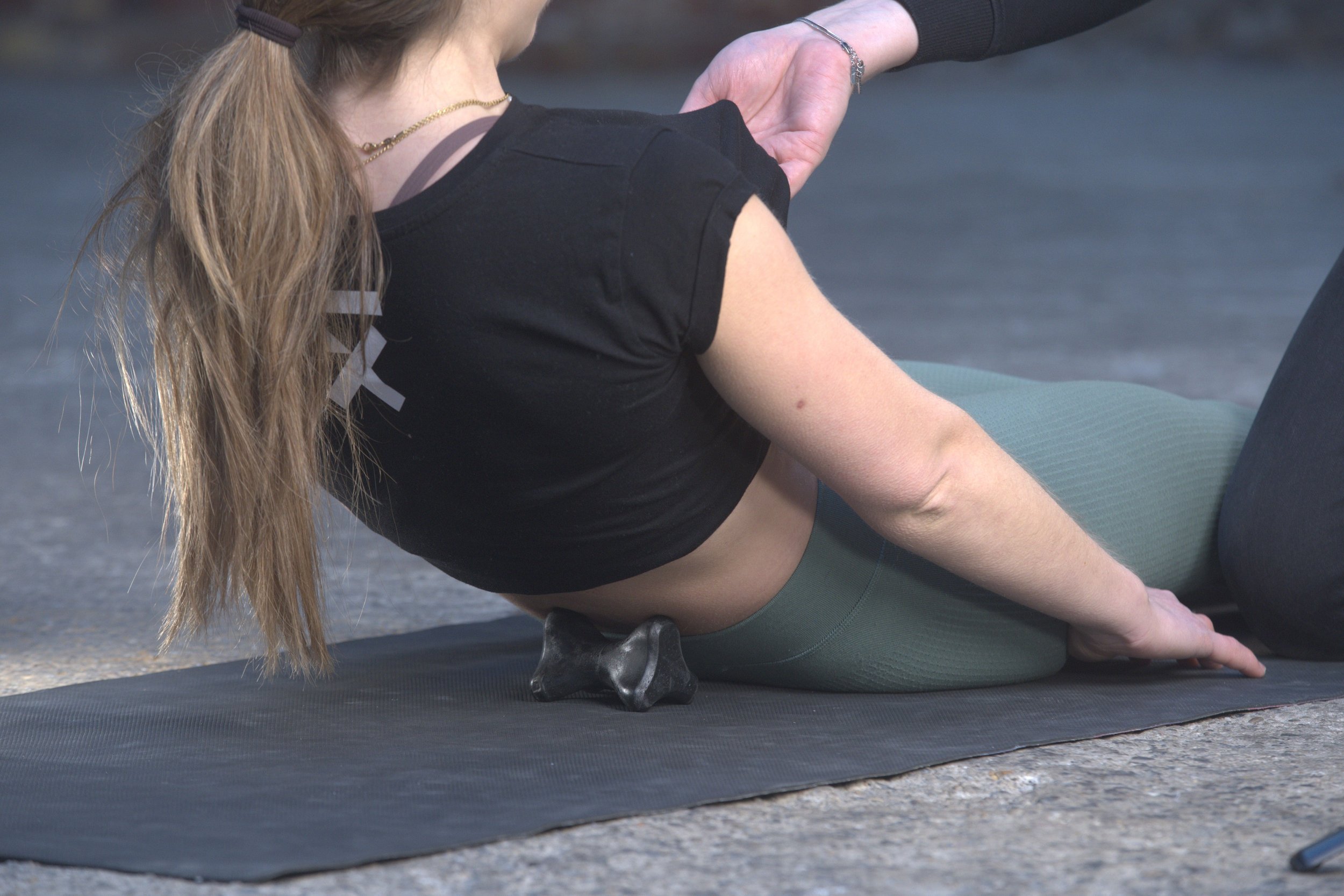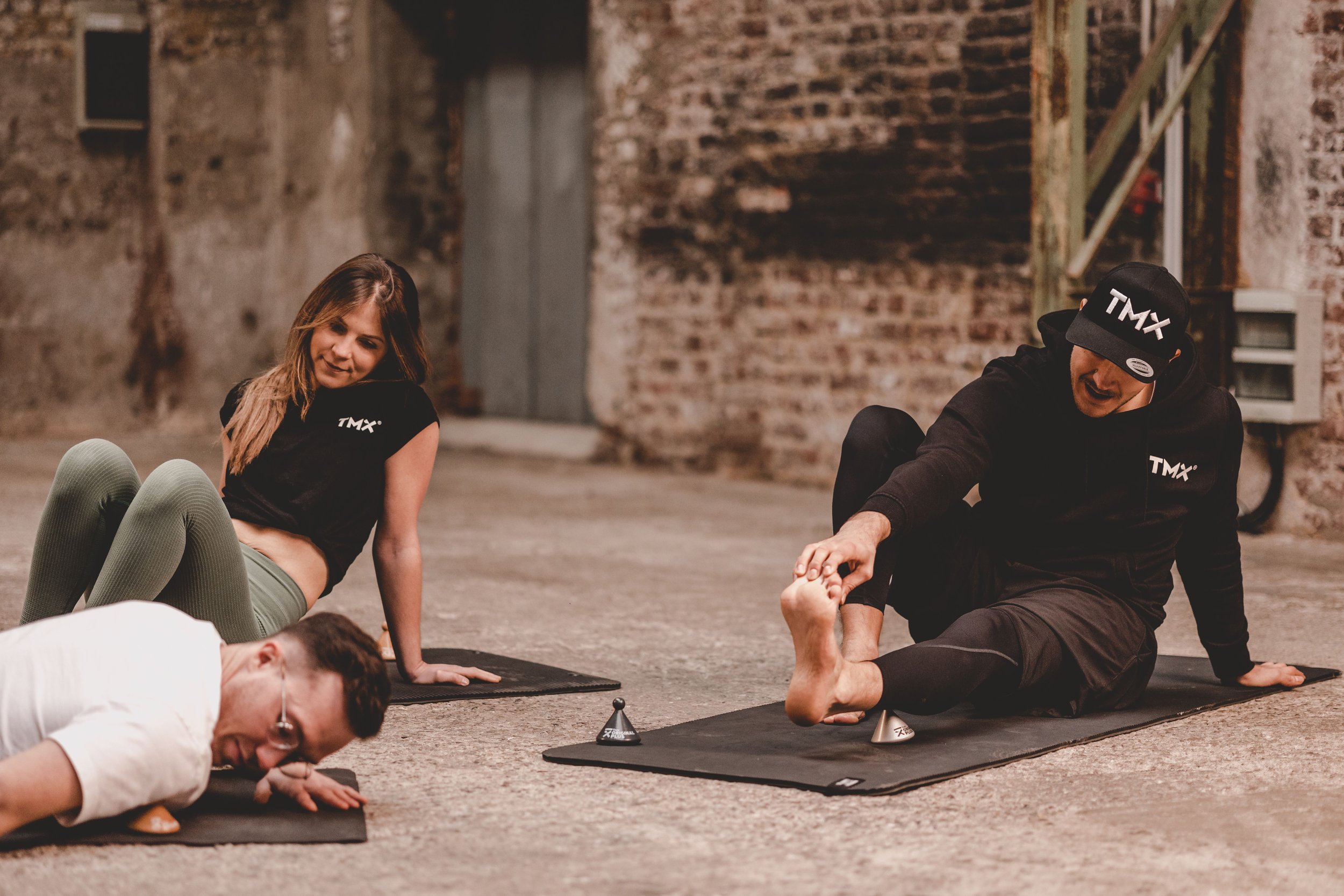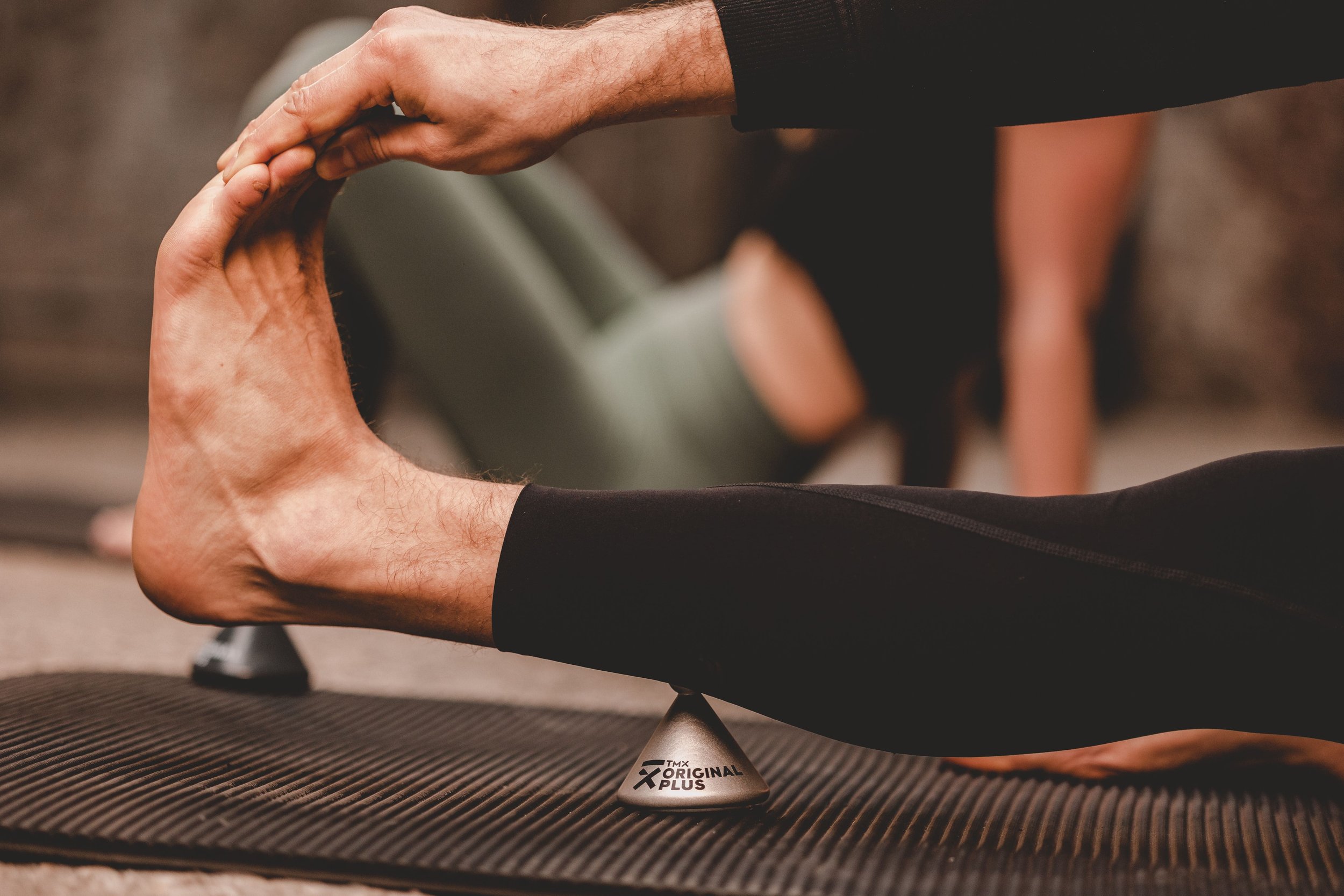AREAS OF APPLICATION:
Pain in the lumbar spine
Pain between lower ribs and iliac crest
Pain in the thoracic spine
pain between the shoulder blades
Lower shoulder and neck pain
IMPORTANT: Depending on the tension and "gluing" of the myofascial tissue, a multi-day application of up to a week may be necessary. In case of sore muscles on the following day, a rest day should be observed between the applications. To prevent recurring tension, the application should be continued even if there are no pain symptoms.
THE ORIGINAL - NOW DIGITAL
With the new TMX® CONNECT technology, you can now get even more out of your TMX® trigger. Simply run your smartphone over the bottom of the trigger and you'll get application videos and in-depth trigger know-how directly on your smartphone.
INDICATIONS
General back pain, lumbago, lumbago, pain between the shoulder blades, lumbar spine pain, thoracic spine pain, osteochondrosis, spinal canal stenosis, fascia arthrosis, condition after disc disease, myofascial adhesions, restricted movement, breathing difficulties, pressure in the chest, stitches in the chest
CONTRAINDICATIONS
Signs of inflammation (warmth, swelling, redness), after operations, acute herniated discs, fractures, metal in the spine, osteoporosis, slipped vertebrae























